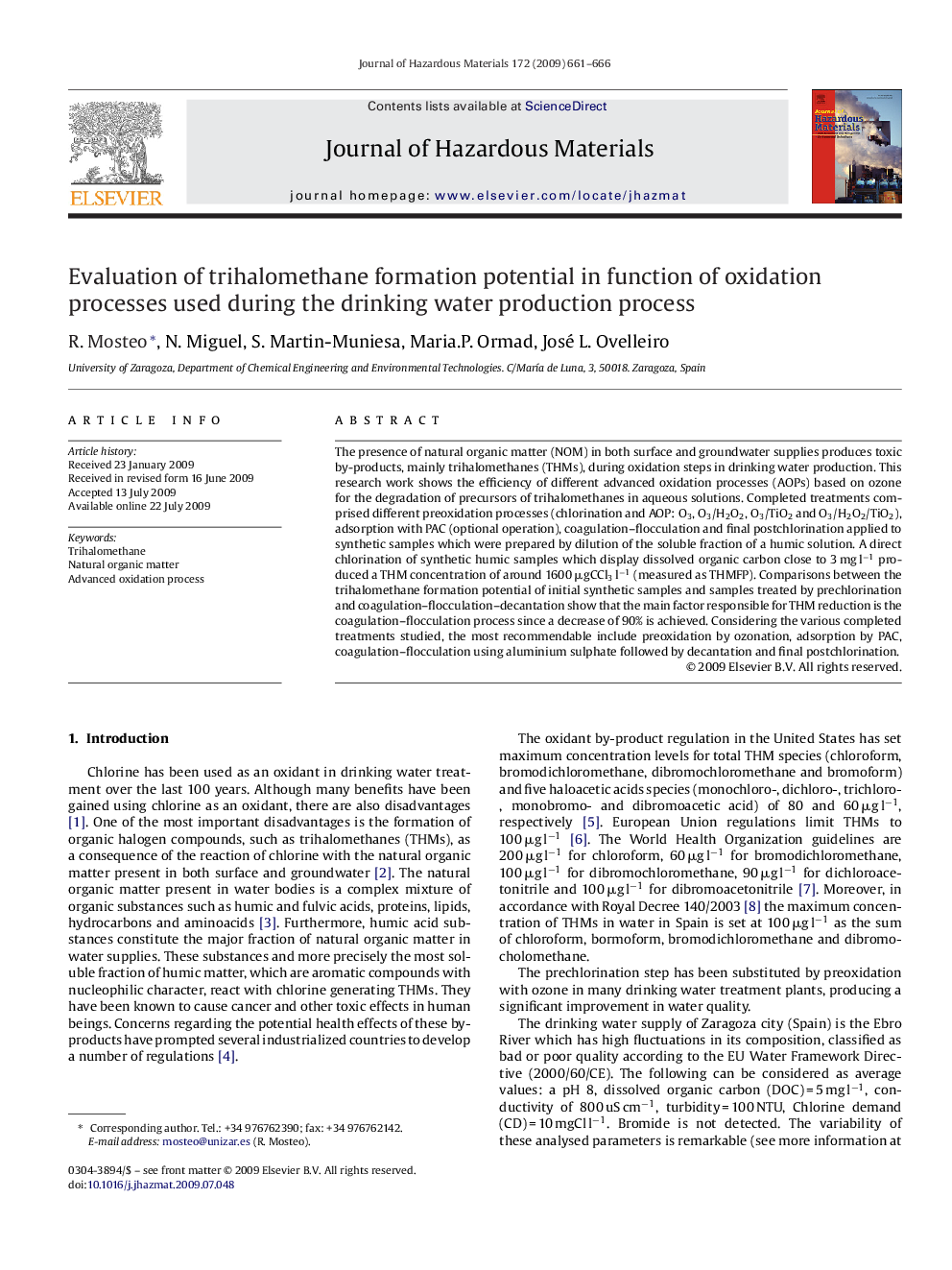| Article ID | Journal | Published Year | Pages | File Type |
|---|---|---|---|---|
| 580745 | Journal of Hazardous Materials | 2009 | 6 Pages |
Abstract
The presence of natural organic matter (NOM) in both surface and groundwater supplies produces toxic by-products, mainly trihalomethanes (THMs), during oxidation steps in drinking water production. This research work shows the efficiency of different advanced oxidation processes (AOPs) based on ozone for the degradation of precursors of trihalomethanes in aqueous solutions. Completed treatments comprised different preoxidation processes (chlorination and AOP: O3, O3/H2O2, O3/TiO2 and O3/H2O2/TiO2), adsorption with PAC (optional operation), coagulation-flocculation and final postchlorination applied to synthetic samples which were prepared by dilution of the soluble fraction of a humic solution. A direct chlorination of synthetic humic samples which display dissolved organic carbon close to 3 mg lâ1 produced a THM concentration of around 1600 μgCCl3 lâ1 (measured as THMFP). Comparisons between the trihalomethane formation potential of initial synthetic samples and samples treated by prechlorination and coagulation-flocculation-decantation show that the main factor responsible for THM reduction is the coagulation-flocculation process since a decrease of 90% is achieved. Considering the various completed treatments studied, the most recommendable include preoxidation by ozonation, adsorption by PAC, coagulation-flocculation using aluminium sulphate followed by decantation and final postchlorination.
Related Topics
Physical Sciences and Engineering
Chemical Engineering
Chemical Health and Safety
Authors
R. Mosteo, N. Miguel, S. Martin-Muniesa, Maria.P. Ormad, José L. Ovelleiro,
